Pile Damage Detection Using Machine Learning with the Multipoint Traveling Wave Decomposition Method
Abstract
:1. Introduction
- (1)
- It eliminates the dynamic vibration effect of the superstructure above the transducers while maintaining almost all the mechanical information of the pile’s lower part;
- (2)
- It implements the well-developed pile dynamic theory, which is the same as the conventional PIT and lateral PIT, and has the same capabilities, such as including damage detection and length prediction;
- (3)
- It utilizes standard and uniform fictitious excitations, whose duration period can be as short as possible to distinguish the reflections and can be manually controlled;
- (4)
2. In-Hole Multipoint Traveling Wave Decomposition (MTPWD) Method
2.1. Operation Steps
- (1)
- Pile preparation and transducer layout: As shown in Figure 1, multiple (at least three) equally-spaced acceleration/velocity transducers are located in a cased test hole (which can be replaced by the sonic logging tube if it exists) inside the test pile by clamping or inflating the device, and the fixtures are designed to be as lightweight and stiff as possible. The spacing between adjacent transducers should be larger than the product of the one-dimensional elastic wave velocity of the RC pile and the sampling time step but limited to 1.0 m to weaken the dissipation effect [16]. To better locate and characterize defects or to determine the pile toe, the transducers should be installed more than 1.0–2.0 m above the potential defect/pile toe. Specifically, for an extremely long pile, the transducers should be installed at the lower part to collect the pile toe reflection; for a pile with an enlarged pile head or severe upper defects, the transducers should be installed below the suspected defect location and the lower-part pile integrity test (LPPIT) should be applied.
- (2)
- Test excitation and signal acquisition: A vertical impulse is imposed at the pile top to conduct the in-hole MPTWD method, and the transducers collect vertical velocity responses simultaneously. The selection of test impulse parameters and the high-frequency (HF) disturbance have an insignificant effect on the final MPTWD result [16]; therefore, a relatively low-frequency test impulse can be used (i.e., an incident wave with a longer duration, which corresponds to a deeper influence depth) to detect the lower-part pile integrity.
- (3)
- Interpretation of in-hole MPTWD results: The dynamic responses of transducers are acquired and utilized to separate the downward and upward waves. By employing discrete Fourier transform (DFT) or fast Fourier transform (FFT), the pseudo-frequency response (PFR) function is defined by dividing the upward wave by the downward wave in the frequency domain. An idealized semi-sine fictitious excitation is then utilized to reconstruct the in-hole MPTWD results, which are close to conventional PIT results. Similar to the PIT method, it should also be noted that the accuracy of the in-hole MPTWD result is also restricted by the wavelength of the one-dimensional elastic wave. This method can eliminate the dynamic effect of the upper part of the pile foundation and, hence, distinguish the reflection caused by the first defect below (or by the pile toe for an intact pile). For a pile with multiple defects, the pile defects can be observed one by one from top to toe by lowering the transducers and repeating the test. The data processing procedures (including traveling wave decomposition and in-hole MPTWD result reconstruction) are demonstrated in the following sections.
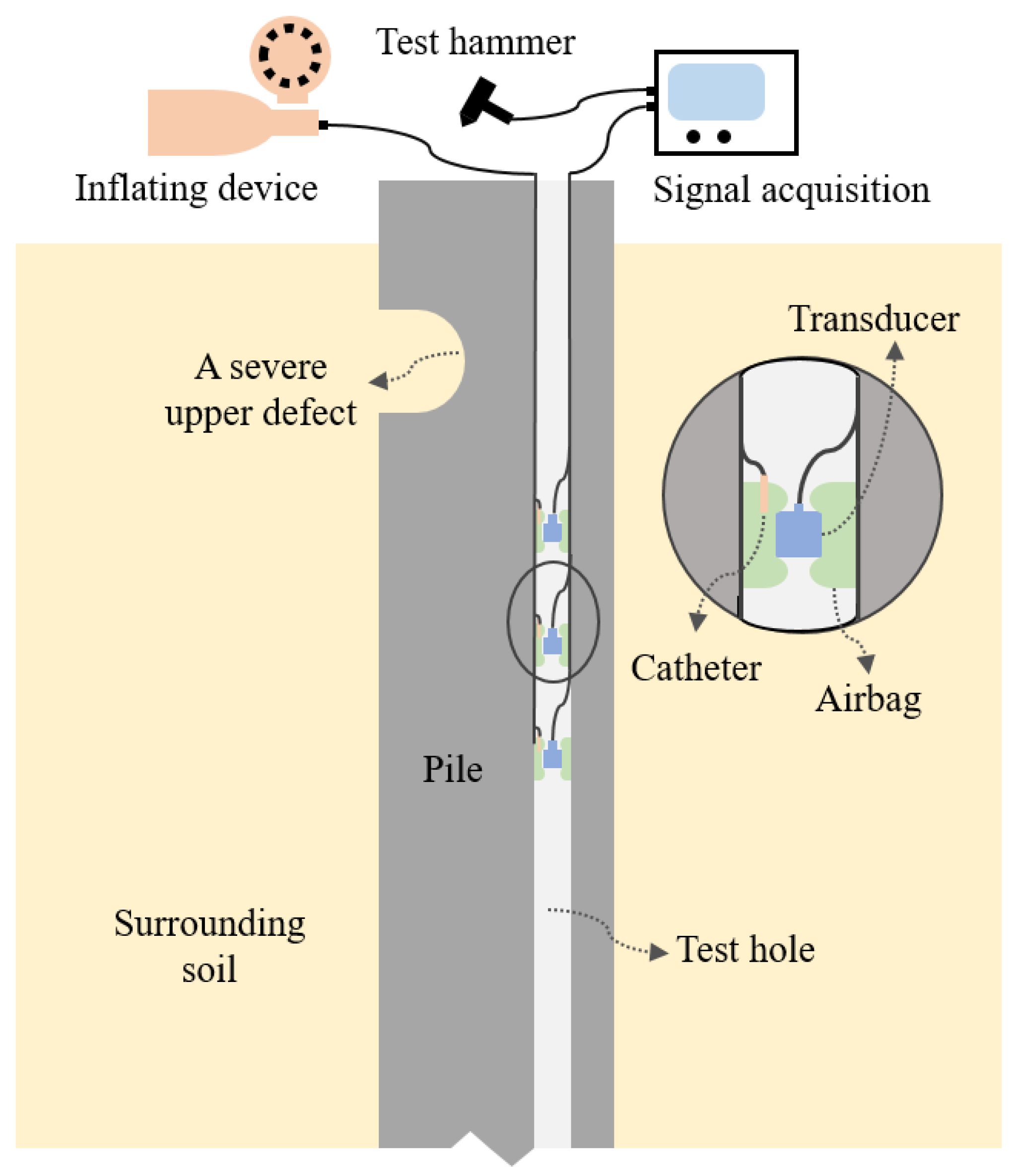
2.2. Data Processing
- (1)
- Traveling wave decomposition
- (2)
- In-hole MPTWD result reconstruction
3. Data-Driven Modeling Framework
- (1)
- Data acquisition: The in-hole MPTWD results, i.e., the velocity time history of the lower-part pile foundation subjected to the idealized semi-sine fictitious excitation, are inputted as the raw data for the modeling framework. Because the developed method can suppress the effect of random uncertainty in the field test (e.g., impulse duration, high-frequency noise, zero/temperature drift, etc.), Wu et al. [16] reported that the MPTWD results derived from the field transducers are in good agreement with that obtained from data simulated by analytical solutions or finite element analysis (FEA). Given that the number of field test samples of the in-hole MPTWD method is relatively small at this stage, a large sample set is generated employing the analytical solution established in this study, and the feasibility of the data-driven modeling framework is demonstrated using this data set.
- (2)
- Pattern recognition: The typical pattern of the lower-part pile integrity can be recognized by the waveform between the incident wave (i.e., the idealized semi-sine fictitious excitation) and the first significant reflection caused by the pile toe, or by a severe pile defect below the transducers [1,2,3,4]. The typical pattern is a windowed waveform that contains almost all the mechanics information of the first defect below the transducers. Meanwhile, for multiple pile defects, the in-hole MPTWD method and its results are utilized to characterize the potential defects one by one from top to toe. Based on the typical pattern, an experienced operator can predict whether there is a defect below the transducers and whether it is a stiffened or weakened defect. However, quantifying the degree of a specific defect is beyond human capacity, even for an experienced expert.
- (3)
- Feature extraction: Two specific techniques for feature extraction are studied in this study. First, the distributed sampling technique through linear interpolation is employed to extract the waveform of the recognized pattern, which is close to the conventional way of visual detection observed by the operators. Second, statistical and signal processing techniques are employed to further reduce the number of features, which makes the features more robust for the machine-learning algorithms. The comparison of the two techniques for feature extraction will be discussed via a case study.
- (4)
- Machine learning and damage characterization: Three classifiers of machine-learning methods are applied to the extracted features and to characterize the pile damage, namely: logistic regression (LR), extreme gradient boosting (XGBoost) and multilayer perceptron (MLP). The pile damage is classified into four categories according to its equivalent cross-sectional acoustic impedance compared with that of the intact part: (a) Class I: |ad| ≤ 10%, including the intact pile, i.e., ad = 0; (b) Class II: 10% < |ad| ≤ 20%; (c) Class III: 20% < |ad| ≤ 30%; and (d) Class IV: |ad| > 30%. The defect degree coefficient ad is defined as
4. Data Acquisition
4.1. Analytical Solution
4.2. Sample Set Generation
5. Feature Extraction
5.1. Distributed Sampling
5.2. Statistical and Signal Processing
6. Machine Learning and Damage Characterization
7. Case Study
8. Conclusions
- (1)
- The in-hole MPTWD method was developed for the detection and characterization of the potential damage of cast in situ RC piles. It is also suitable for situations involving the lower-part pile integrity test (LPPIT), especially for extremely long piles, piles with multiple defects, a pile head that has not been removed yet or when the reserved sonic logging tubes are partially blocked during the construction period.
- (2)
- Given that the fictitious excitation and time interval of the MPTWD result can be user-defined, the in-hole MPTWD result obtained by the traveling wave decomposition and in-hole MPTWD result reconstruction techniques are ideal for evaluating the lower-part pile integrity and identifying the first defect below the transducers as well as the pile toe.
- (3)
- The in-hole MPTWD result was further applied to establish a data-driven machine-learning framework and to characterize the quantity/degree of the potential damage. The analytical solution to the longitudinal vibration of piles with multiple defects was employed to generate sufficient samples (up to 10,000 in this case study) to verify the feasibility and optimize the performance of the data-driven modeling framework.
- (4)
- Two specific techniques (distributed sampling and statistical and signal processing) were employed to extract features of the typical recognized pattern. A specific case study was conducted to evaluate the performance of the two techniques for feature extraction applied to three machine-learning classifiers. The results show that all three classifiers (LR, XGBoost and MLP) perform much better when employing the statistical and signal processing technique, and the total of 24 extracted features are reasonable and efficient for the machine-learning algorithms.
Author Contributions
Funding
Institutional Review Board Statement
Informed Consent Statement
Data Availability Statement
Conflicts of Interest
Appendix A
References
- Gao, L.; Wang, K.; Wu, J.; Xiao, S.; Wang, N. Analytical solution for the dynamic response of a pile with a variable-section interface in low-strain integrity testing. J. Sound Vib. 2017, 395, 328–340. [Google Scholar] [CrossRef]
- Wang, K.; Wu, W.; Zhang, Z.; Leo, C.J. Vertical dynamic response of an inhomogeneous viscoelastic pile. Comput. Geotech. 2010, 37, 536–544. [Google Scholar] [CrossRef]
- Wu, J.T.; Wang, K.H.; Gao, L.; Xiao, S. Study on longitudinal vibration of a pile with variable sectional acoustic impedance by integral transformation. Acta Geotech. 2019, 14, 1857–1870. [Google Scholar] [CrossRef]
- Wu, W.; El Naggar, M.H.; Abdlrahem, M.; Mei, G.; Wang, K. New interaction model for vertical dynamic response of pipe piles considering soil plug effect. Can. Geotech. J. 2017, 54, 987–1001. [Google Scholar] [CrossRef]
- Chernauskas, L.R.; Paikowsky, S.G. Defect detection and examination of large drilled shafts using a new cross-hole sonic logging system. In Performance Confirmation of Constructed Geotechnical Facilities; American Society of Civil Engineers: Amherst, MA, USA, 2000; pp. 66–83. [Google Scholar]
- Li, D.Q.; Zhang, L.M.; Tang, W.H. Reliability evaluation of cross-hole sonic logging for bored pile integrity. J. Geotech. Geoenviron. Eng. 2005, 131, 1130–1138. [Google Scholar] [CrossRef]
- White, B.; Nagy, M.; Allin, R. Comparing cross-hole sonic logging and low-strain integrity testing results. In Proceedings of the Eighth International Conference on the Application of Stress Wave Theory to Piles, Lisbon, Portugal, 8–10 September 2008; pp. 471–476. [Google Scholar]
- Davis, A.G. Nondestructive evaluation of existing deep foundations. J. Perform. Constr. Facil. 1995, 9, 57–74. [Google Scholar] [CrossRef]
- Kenai, S.; Bahar, R. Evaluation and repair of Algiers new airport building. Cem. Concr. Compos. 2003, 25, 633–641. [Google Scholar] [CrossRef]
- Liao, S.T.; Tong, J.H.; Chen, C.H.; Wu, T.T. Numerical simulation and experimental study of parallel seismic test for piles. Int. J. Solids Struct. 2006, 43, 2279–2298. [Google Scholar] [CrossRef]
- Sack, D.A.; Slaughter, S.H.; Olson, L.D. Combined measurement of unknown foundation depths and soil properties with nondestructive evaluation methods. Transp. Res. Rec. 2004, 1868, 76–80. [Google Scholar] [CrossRef]
- Wu, J.; El Naggar, M.H.; Wang, K. Analytical model for laterally loaded soil-extended pile shaft applied to verifying the applicability of lateral PS method. J. Geotech. Geoenviron. Eng. 2021, 147, 04021103. [Google Scholar] [CrossRef]
- Wu, J.; Wang, K.; El Naggar, M.H. Dynamic soil reactions around pile-fictitious soil pile coupled model and its application in parallel seismic method. Comput. Geotech. 2019, 110, 44–56. [Google Scholar] [CrossRef]
- Wu, J.; Wang, K.; El Naggar, M.H. Dynamic response of a defect pile in layered soil subjected to longitudinal vibration in parallel seismic integrity testing. Soil Dyn. Earthq. Eng. 2019, 121, 168–178. [Google Scholar] [CrossRef]
- Wu, J.; Wang, K.; El Naggar, M.H. Half-space dynamic soil model excited by known longitudinal vibration of a defective pile. Comput. Geotech. 2019, 112, 403–412. [Google Scholar] [CrossRef]
- Wu, J.; El Naggar, M.H.; Ge, J.; Wang, K.; Zhao, S. Multipoint Traveling Wave Decomposition Method and Its Application in Extended Pile Shaft Integrity Test. J. Geotech. Geoenviron. Eng. 2021, 147, 04021128. [Google Scholar] [CrossRef]
- Chow, H.S.W.; Small, J.C. Behaviour of piled rafts with piles of different lengths and diameters under vertical loading. In Advances in Deep Foundations; American Society of Civil Engineers: Amherst, MA, USA, 2005; pp. 1–15. [Google Scholar]
- Leung, Y.F.; Klar, A.; Soga, K. Theoretical study on pile length optimization of pile groups and piled rafts. J. Geotech. Geoenviron. Eng. 2010, 136, 319–330. [Google Scholar] [CrossRef]
- Liang, F.Y.; Chen, L.Z.; Shi, X.G. Numerical analysis of composite piled raft with cushion subjected to vertical load. Comput. Geotech. 2003, 30, 443–453. [Google Scholar] [CrossRef]
- Wu, J.; El Naggar, M.H.; Zhao, S.; Wen, M.; Wang, K. Beam–Unequal Length Piles–Soil Coupled Vibrating System Considering Pile–Soil–Pile Interaction. J. Bridge Eng. 2021, 26, 04021086. [Google Scholar] [CrossRef]
- Wu, J.; El Naggar, M.H.; Wang, K.; Liu, X. Analytical Study of Employing Low-Strain Lateral Pile Integrity Test on a Defective Extended Pile Shaft. J. Eng. Mech. 2020, 146, 04020103. [Google Scholar] [CrossRef]
- Wu, J.; El Naggar, M.H.; Wang, K.; Wu, W. Lateral vibration characteristics of an extended pile shaft under low-strain integrity test. Soil Dyn. Earthq. Eng. 2019, 126, 105812. [Google Scholar] [CrossRef]
- JGJ 106; Technical Code for Building Pile Foundation. The Professional Standards Compilation Group of People’s Republic of China: Beijing, China, 2014.
- Beskhyroun, S.; Oshima, T.; Mikami, S. Wavelet-based technique for structural damage detection. Struct. Control Health Monit. 2010, 17, 473–494. [Google Scholar] [CrossRef]
- Gökdağ, H.; Kopmaz, O. A new damage detection approach for beam-type structures based on the combination of continuous and discrete wavelet transforms. J. Sound Vib. 2009, 324, 1158–1180. [Google Scholar] [CrossRef]
- HosseinAbadi, H.Z.; Amirfattahi, R.; Nazari, B.; Mirdamadi, H.R.; Atashipour, S.A. GUW-based structural damage detection using WPT statistical features and multiclass SVM. Appl. Acoust. 2014, 86, 59–70. [Google Scholar] [CrossRef]
- Wang, X.; Hu, N.; Fukunaga, H.; Yao, Z.H. Structural damage identification using static test data and changes in frequencies. Eng. Struct. 2001, 23, 610–621. [Google Scholar] [CrossRef]
- Agrawal, A.K.; Chakraborty, G. Structural damage detection by integrating short time fourier transform, principal component analysis and logistic regression. In Safety and Reliability–Safe Societies in a Changing World; CRC Press: Boca Raton, FL, USA, 2018; pp. 971–976. [Google Scholar]
- Erener, A.; Mutlu, A.; Düzgün, H.S. A comparative study for landslide susceptibility mapping using GIS-based multi-criteria decision analysis (MCDA), logistic regression (LR) and association rule mining (ARM). Eng. Geol. 2016, 203, 45–55. [Google Scholar] [CrossRef]
- Chakraborty, D.; Elzarka, H. Early detection of faults in HVAC systems using an XGBoost model with a dynamic threshold. Energy Build. 2019, 185, 326–344. [Google Scholar] [CrossRef]
- Dong, W.; Huang, Y.; Lehane, B.; Ma, G. XGBoost algorithm-based prediction of concrete electrical resistivity for structural health monitoring. Autom. Constr. 2020, 114, 103155. [Google Scholar] [CrossRef]
- Avci, O.; Abdeljaber, O.; Kiranyaz, S.; Inman, D. Structural damage detection in real time: Implementation of 1D convolutional neural networks for SHM applications. In Structural Health Monitoring & Damage Detection; Springer: Cham, Switzerland, 2017; Volume 7, pp. 49–54. [Google Scholar]
- Mehrjoo, M.; Khaji, N.; Moharrami, H.; Bahreininejad, A. Damage detection of truss bridge joints using artificial neural networks. Expert Syst. Appl. 2008, 35, 1122–1131. [Google Scholar] [CrossRef]
- Rhim, J.; Lee, S.W. A neural network approach for damage detection and identification of structures. Comput. Mech. 1995, 16, 437–443. [Google Scholar] [CrossRef]
- Novak, M. Dynamic stiffness and damping of piles. Can. Geotech. J. 1974, 11, 574–598. [Google Scholar] [CrossRef]
- Rodriguez, J.D.; Perez, A.; Lozano, J.A. Sensitivity analysis of k-fold cross validation in prediction error estimation. IEEE Trans. Pattern Anal. Mach. Intell. 2009, 32, 569–575. [Google Scholar] [CrossRef]
- Lobo, J.M.; Jiménez-Valverde, A.; Real, R. AUC: A misleading measure of the performance of predictive distribution models. Glob. Ecol. Biogeogr. 2008, 17, 145–151. [Google Scholar] [CrossRef]
- Zhang, Y.; Miyamori, Y.; Mikami, S.; Saito, T. Vibration-based structural state identification by a 1-dimensional convolutional neural network. Comput.-Aided Civ. Infrastruct. Eng. 2019, 34, 822–839. [Google Scholar] [CrossRef]


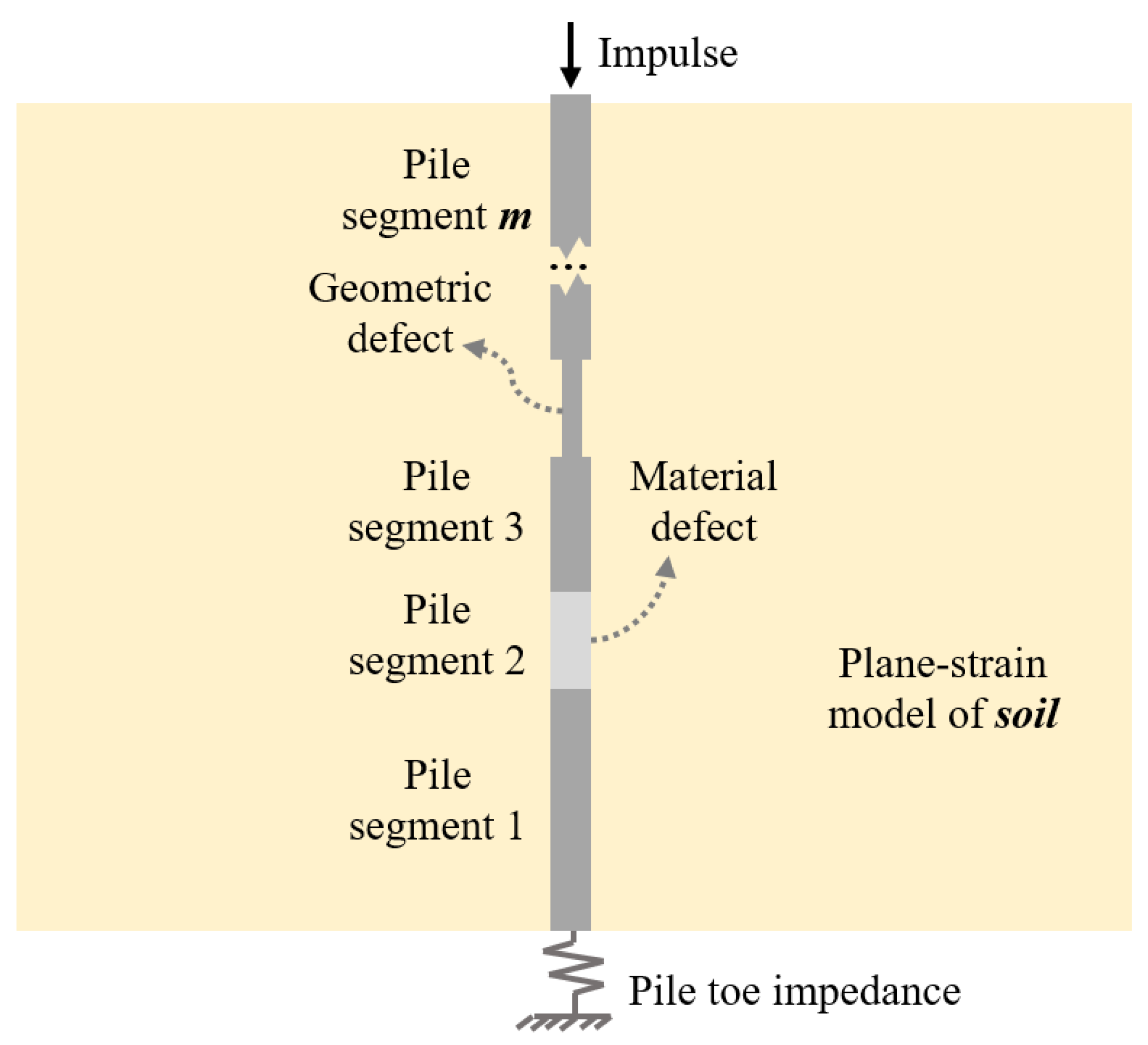
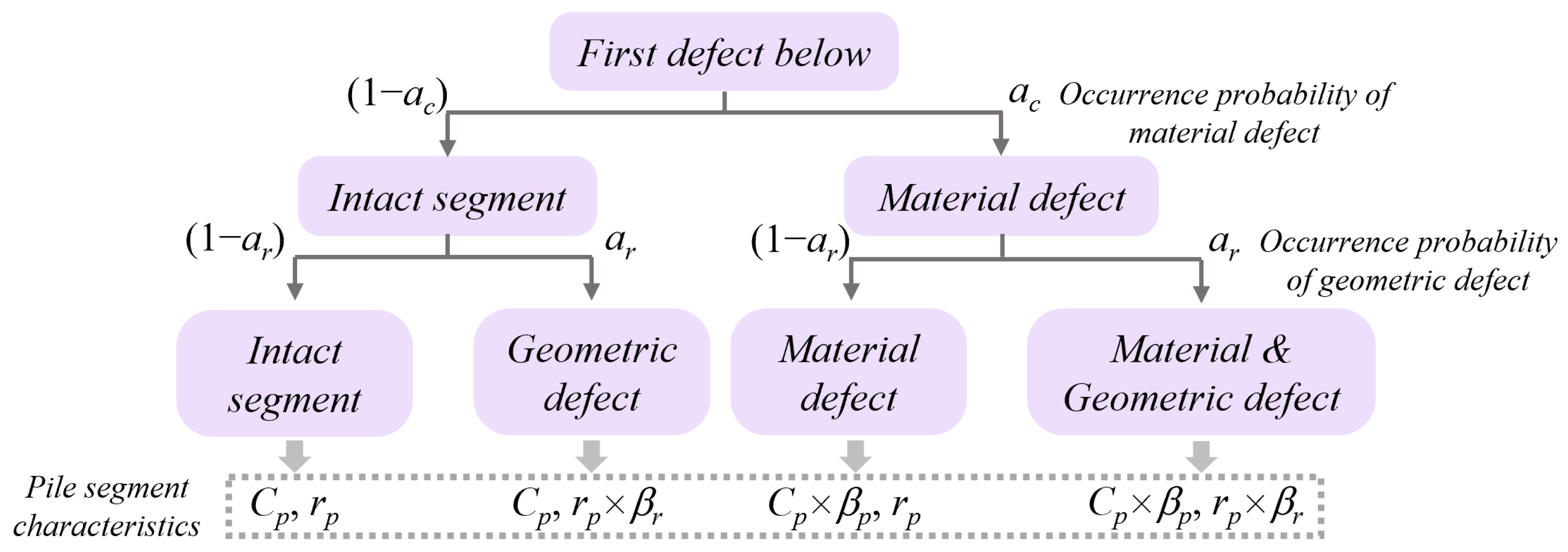


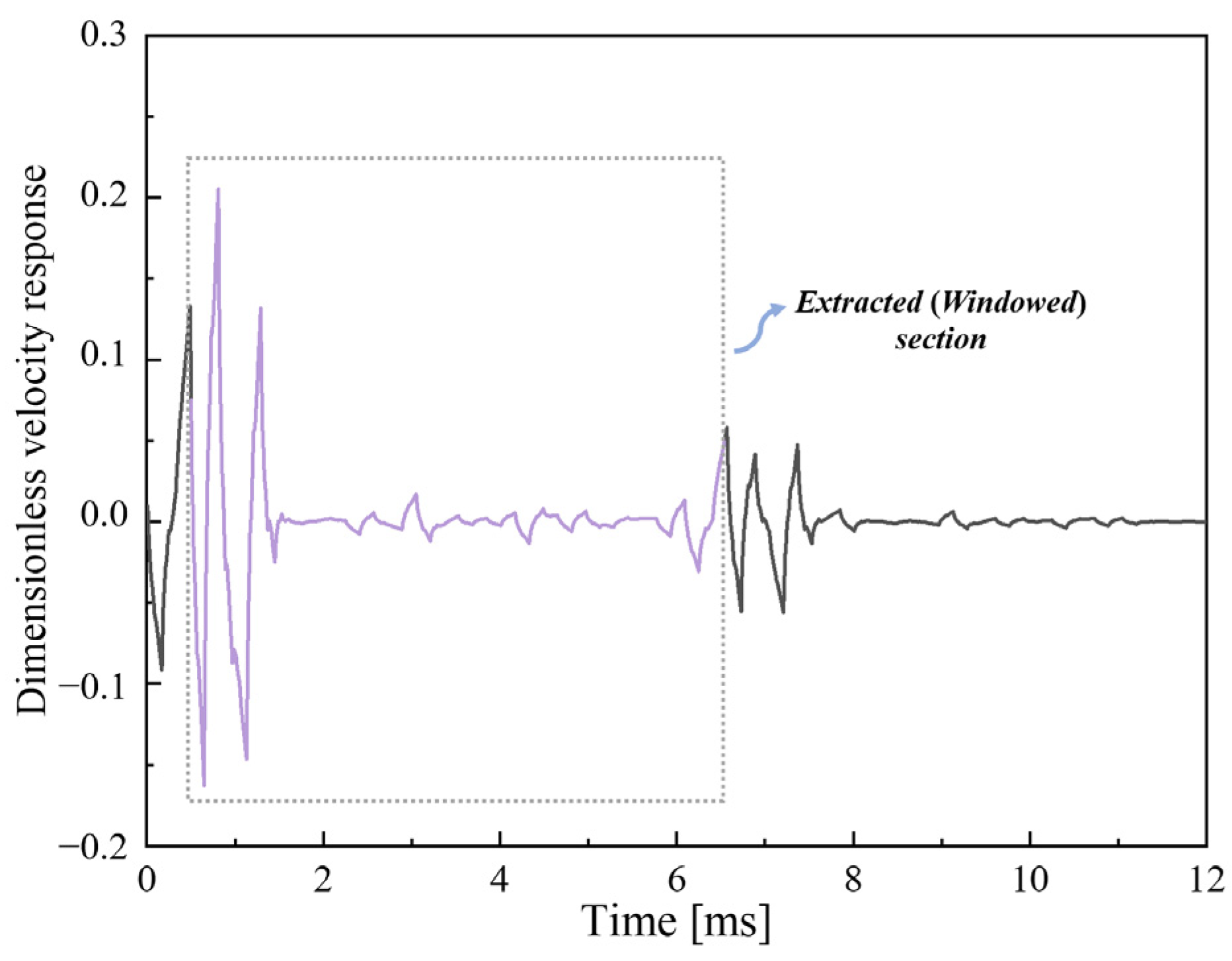
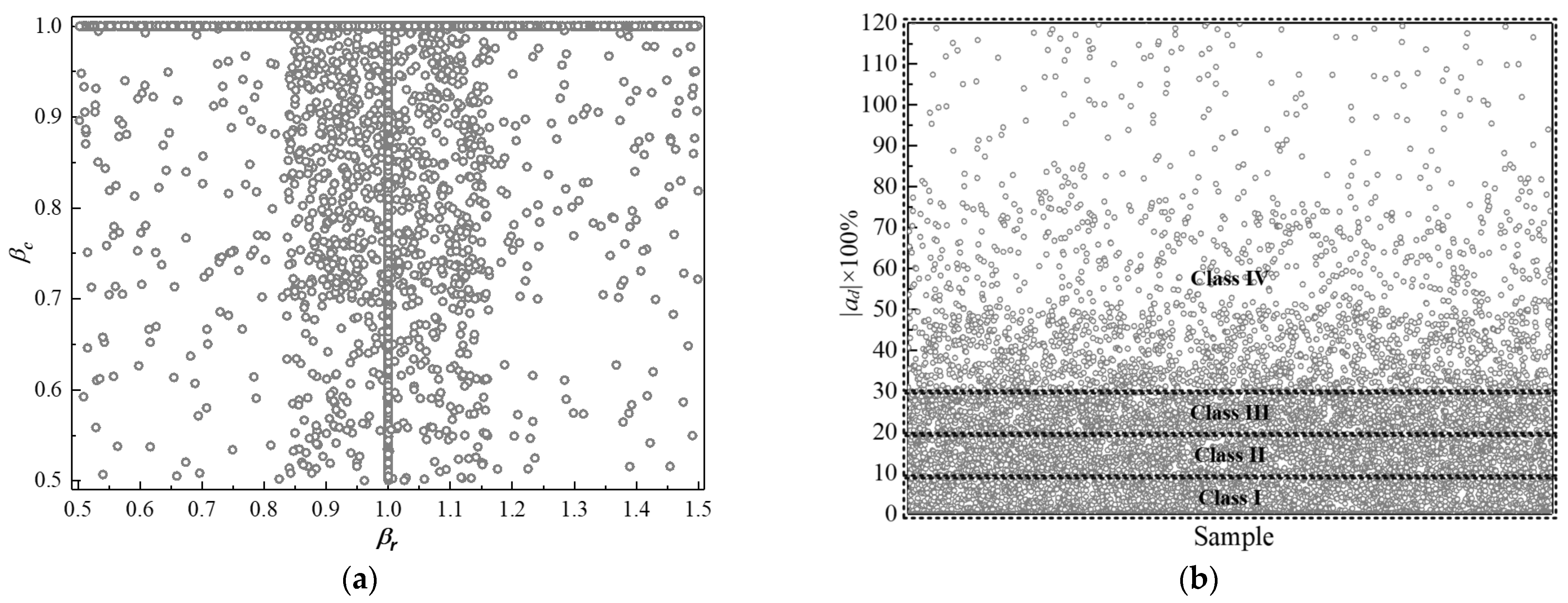
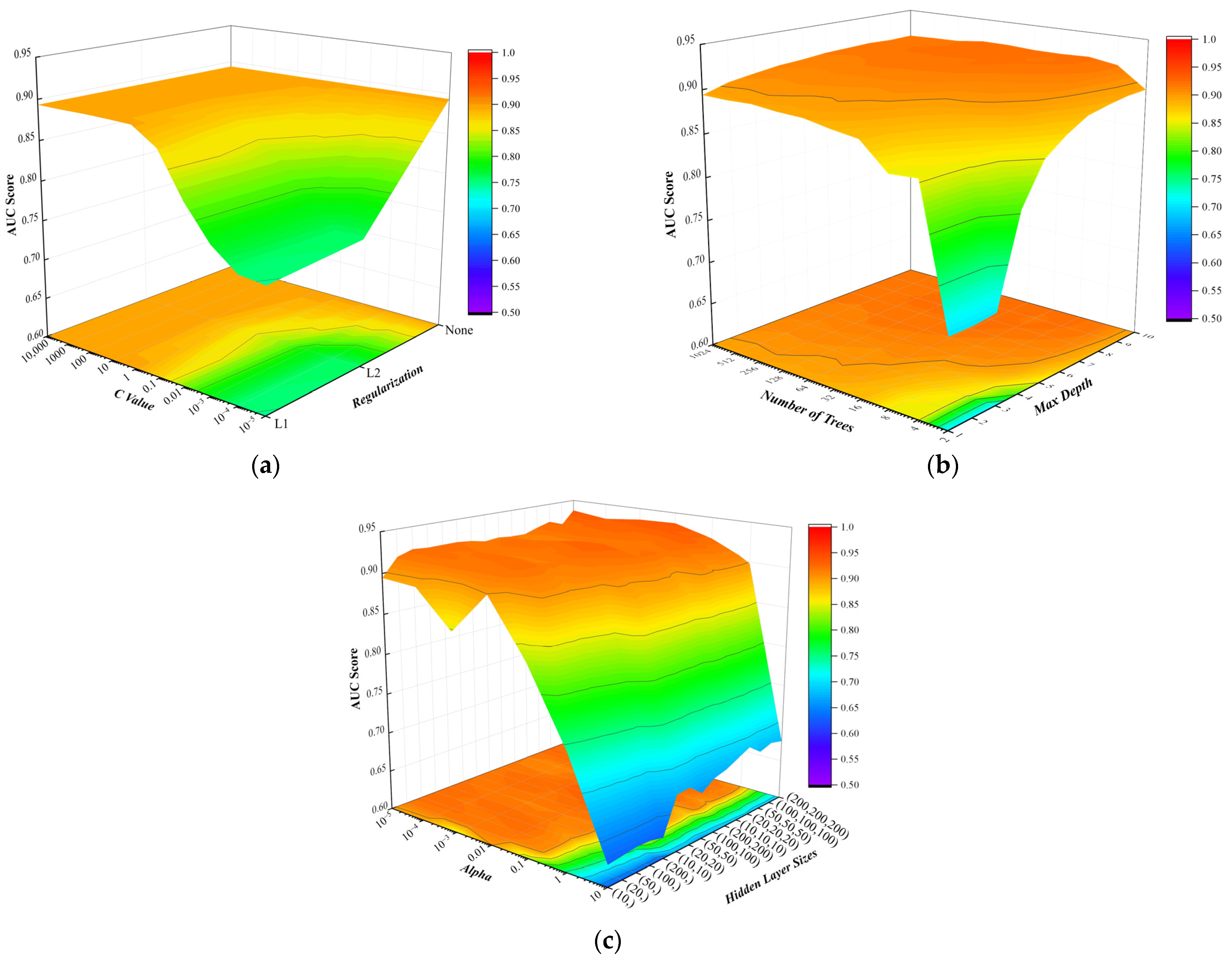
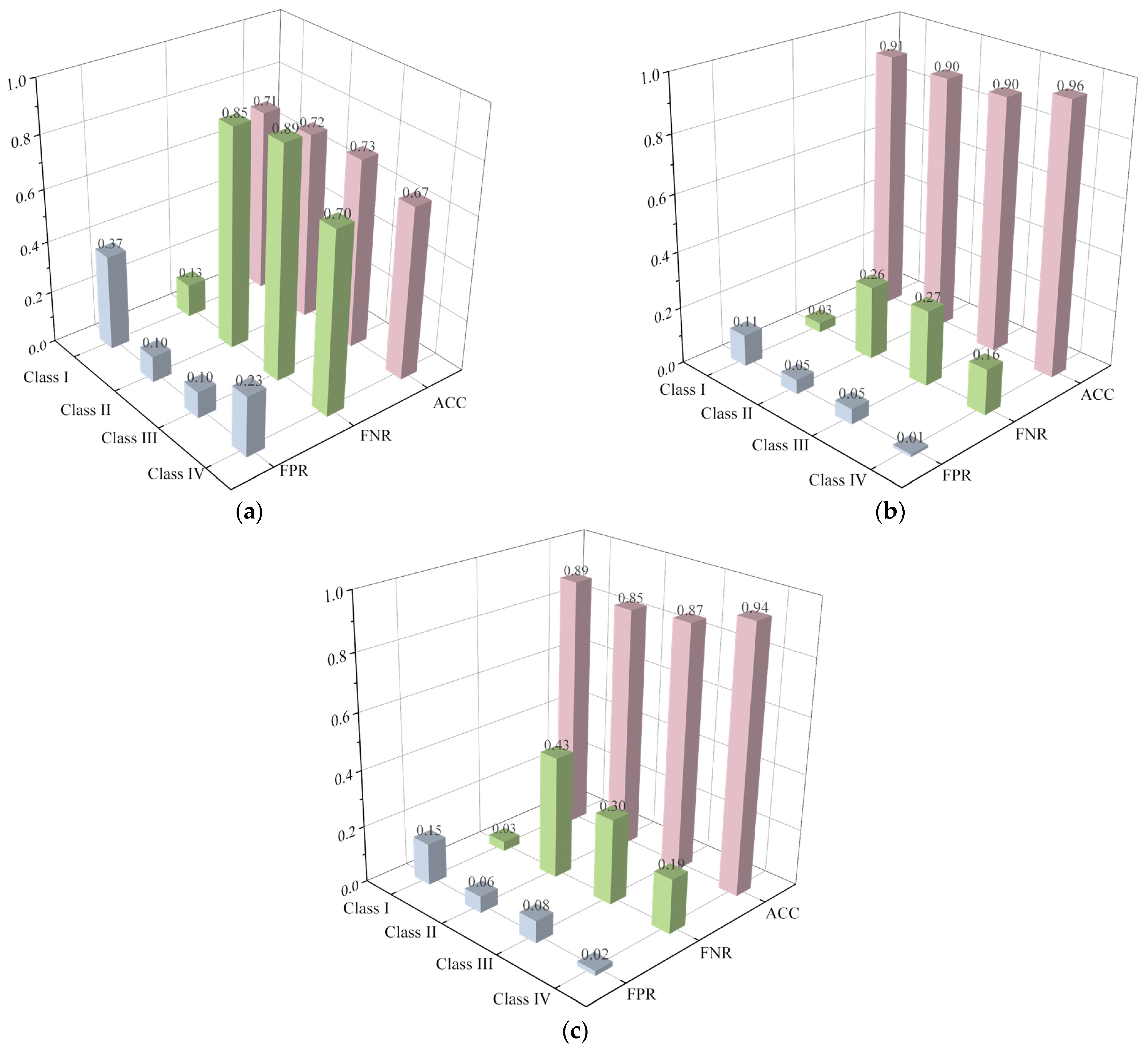



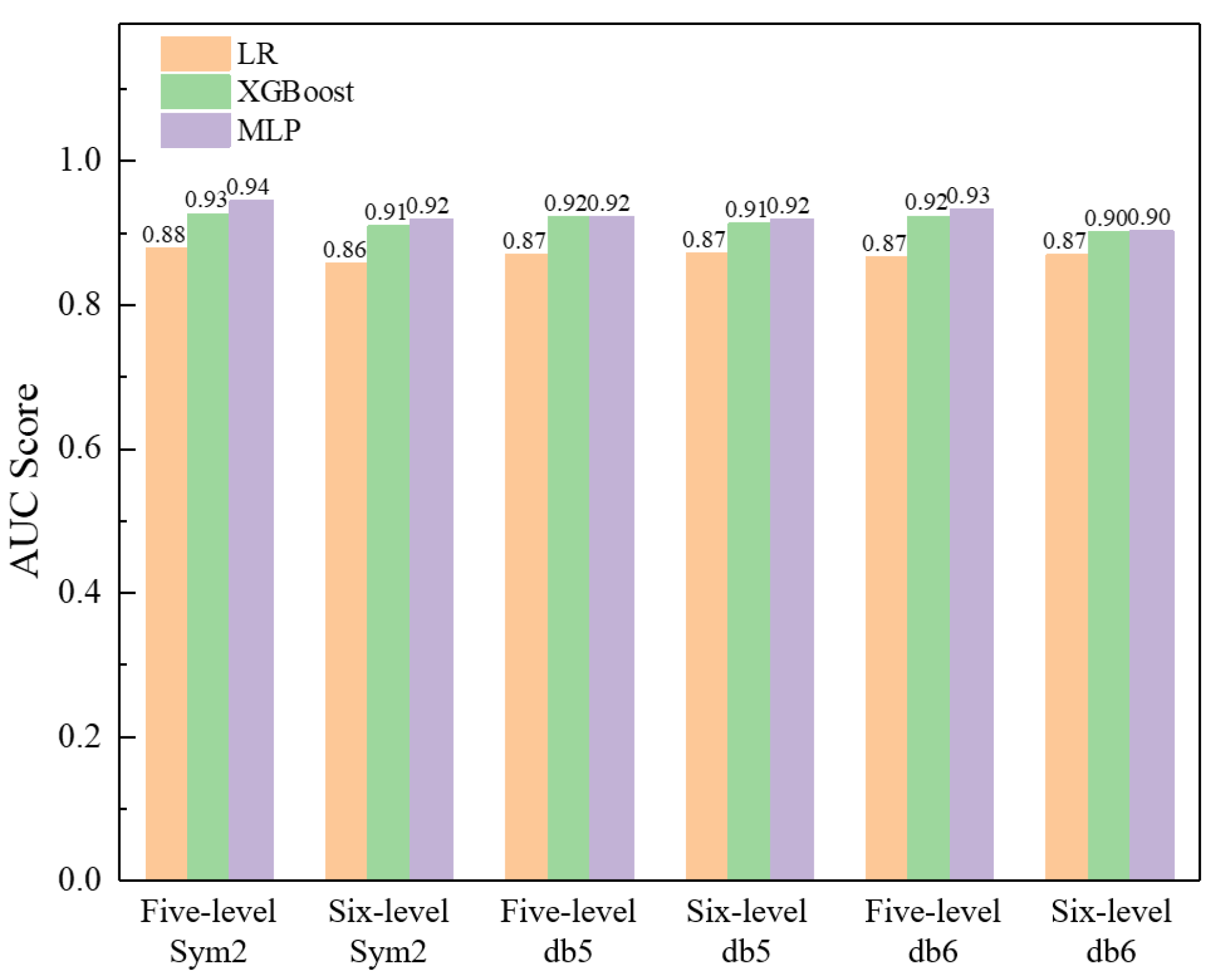
| Functions | Typical Pattern | Detailed Wavelet Coefficients |
|---|---|---|
| Types of features (Time domain) | Amplitude of 1st greatest peak Amplitude of 2nd greatest peak Time (or location) of 2nd greatest peak Curve length RMS (root mean square) Skewness Kurtosis | Curve length RMS Skewness Kurtosis Zero crossing rate |
| Types of features (Frequency domain) | L2 norm Curve length RMS Skewness Kurtosis Zero crossing rate | L2 norm Curve length RMS Skewness Kurtosis Zero crossing rate |
Disclaimer/Publisher’s Note: The statements, opinions and data contained in all publications are solely those of the individual author(s) and contributor(s) and not of MDPI and/or the editor(s). MDPI and/or the editor(s) disclaim responsibility for any injury to people or property resulting from any ideas, methods, instructions or products referred to in the content. |
© 2023 by the authors. Licensee MDPI, Basel, Switzerland. This article is an open access article distributed under the terms and conditions of the Creative Commons Attribution (CC BY) license (https://creativecommons.org/licenses/by/4.0/).
Share and Cite
Wu, J.; El Naggar, M.H.; Wang, K. Pile Damage Detection Using Machine Learning with the Multipoint Traveling Wave Decomposition Method. Sensors 2023, 23, 8308. https://doi.org/10.3390/s23198308
Wu J, El Naggar MH, Wang K. Pile Damage Detection Using Machine Learning with the Multipoint Traveling Wave Decomposition Method. Sensors. 2023; 23(19):8308. https://doi.org/10.3390/s23198308
Chicago/Turabian StyleWu, Juntao, M. Hesham El Naggar, and Kuihua Wang. 2023. "Pile Damage Detection Using Machine Learning with the Multipoint Traveling Wave Decomposition Method" Sensors 23, no. 19: 8308. https://doi.org/10.3390/s23198308
APA StyleWu, J., El Naggar, M. H., & Wang, K. (2023). Pile Damage Detection Using Machine Learning with the Multipoint Traveling Wave Decomposition Method. Sensors, 23(19), 8308. https://doi.org/10.3390/s23198308







